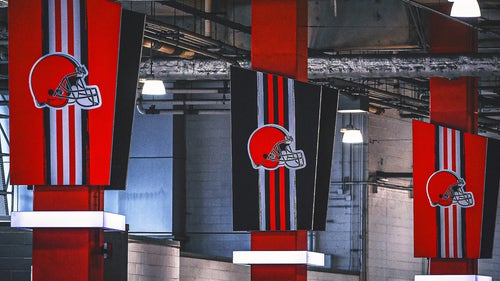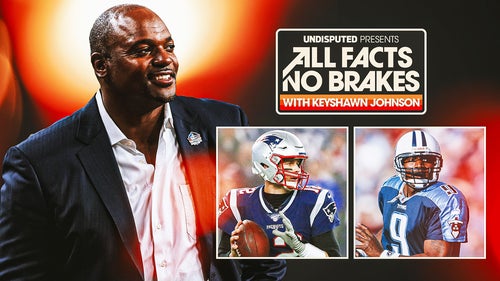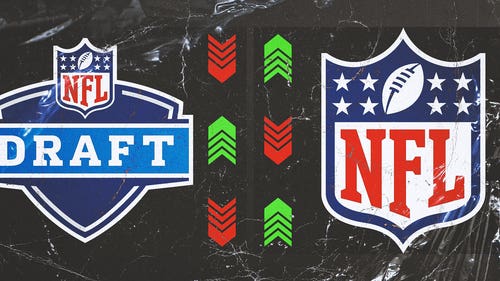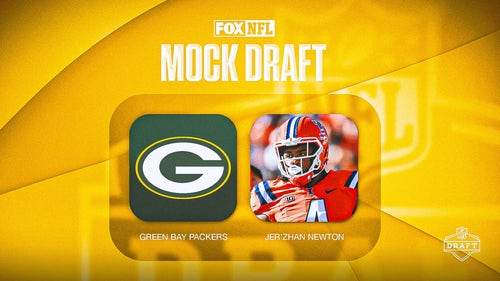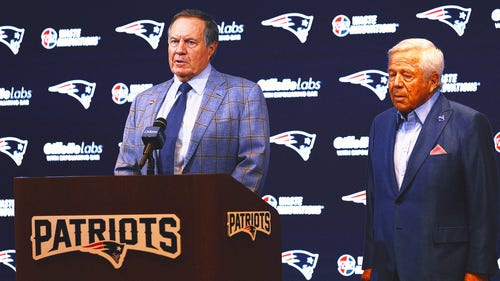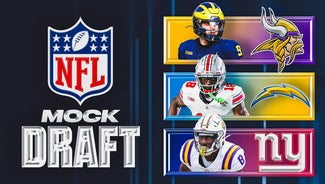
NFL resembles Hatfield-McCoy feud
The History Channel has re-created a classic blood feud with this week’s "Hatfields & McCoys" miniseries.
For modern-day examples of vendettas, mistrust and betrayal accusations, follow the maneuverings of the NFL and its players union.
Whereas those aforementioned families once bickered over ownership of a hog, the league and NFL Players Association are sparring about anything that involves a pigskin. NFL commissioner Roger Goodell and union leader DeMaurice Smith serve as the Devil Anse Hatfield and Randolph McCoy of their respective clans.
Accusations are made, grievances are filed and the hostility stemming from last year’s discordant labor negotiations continues to simmer.
The post-collective bargaining agreement enmity hit a new high last week. The NFLPA filed a collusion claim alleging that NFL teams conspired to have an unwritten (and illegal) $123 million salary cap for the 2010 season.
The union is seeking at least $1 billion in damages. The league denies any wrongdoing.
The lawsuit comes on the heels of other NFLPA actions designed to counter Goodell’s initiatives.
The union is fighting the suspensions of four players for their alleged involvement in the New Orleans Saints bounty scandal. The NFL’s attempts to institute human growth hormone testing remain scuttled by NFLPA resistance. Widow/survivor benefits, medical-research grants, the accounting of player fine money, mandatory use of thigh and knee pads and even a small tweak to in-season practice rules are other points of contention.
Asked last week to categorize his relationship with the NFLPA, Goodell said, “We continue to address the issues. We don’t always agree, but we seek resolutions. Sometimes we will reach a consensus and sometimes we won’t.”
Lately, the “won’t” side is winning by a landslide.
One of the few things both parties can agree upon: Goodell and Smith still don’t enjoy the same chummy rapport as respective predecessors Paul Tagliabue and Gene Upshaw.
We’ll never know whether Goodell and Upshaw could have hammered out a new CBA before last year’s four-month player lockout. Upshaw died of pancreatic cancer in August 2008 at age 63.
Smith’s subsequent election the following spring marked a radical change in NFLPA leadership. He was a high-profile attorney and, unlike Upshaw, had no previous playing experience.
Smith’s litigious nature might be the main reason the NFLPA opted to try to fight the NFL in court when CBA talks collapsed. Smith’s critics also believe he is intent on undermining Goodell after failing to get the commissioner’s power lessened during CBA negotiations.
Smith’s backers say legal action was necessary for players to get the best labor deal possible. The same for resistance to the initiatives being pushed by Goodell and what Smith has described as a “cartel” of NFL owners who want to run roughshod over the union.
“Look, this is a great game,” Smith said last week at an NFLPA news conference. “But as we made clear in ramping up to the lockout, it’s also big business. We all got along and the league locked us out.”
In an arrangement in which the two sides are partners who share revenue, Smith himself has repeatedly pointed to the NFL as the root cause for a lack of trust. Team owners refused to “open the books” to show balance sheets and financial projections during CBA talks despite union requests. The collusion complaint further fans the flames of NFLPA mistrust.
The union also is pushing back against Goodell’s bounty-related suspensions of linebacker Jonathan Vilma (one season), Anthony Hargrove (eight games), defensive end Will Smith (four) and linebacker Scott Fujita (three). The second of the two-part appeals process will be heard Wednesday in Philadelphia.
Players who dislike Goodell’s autocratic standing as judge, juror and jailer on conduct issues are thrilled to hear Smith clamor for the release of evidence to prove the charges. The NFLPA plans to file a grievance against NFL owners who voted last week to make thigh and knee pads mandatory for the 2013 season. That will win Smith more support among some of his constituency, especially wide receivers and defensive backs who don’t want to wear them.
The NFL-NFLPA bickering extends to other issues that aren’t drawing as many headlines. Among them:
• The NFL and NFLPA are split on how to handle the distribution of grant money toward medical research that was negotiated into the new CBA. The league would like to designate the nearly $100 million to the government-run National Institutes of Health. Discussions with the NFLPA about the most effective use of those funds are ongoing, but no progress has been made on allocation.
NFL legal counsel Jeff Pash announced last week that the league will begin funding NIH projects independently through money from its charity branch. Pash said the league would “not allow the absence of agreement between us and the Players Association to retard valuable research and keep it from getting started.”
• The funding of $14 million in benefits for NFL player widows and survivors remains at a standstill. NFL owners voted May 22 to begin paying 51 percent of the bill.
“We hope the union will come along and fund the balance of it,” Pash said. “At least (widows and survivors) won’t be sitting around getting nothing and looking for this seemingly inconclusive dickering to go on and on.”
The NFLPA, though, says there is a valid reason for such “dickering.” An NFLPA petition distributed to its members in mid-May claims the NFL wants the union to fund 100 percent of the benefits by diverting player fine money from assistance trusts that help former players. The NFL denies this is the case.
The NFL also is disputing an NFLPA claim that the league hasn’t accounted for $3.4 million in player fine money collected between 2006 and 2010. Smith alluded to this dispute during the NFLPA news conference.
• The NFLPA has proved unreceptive to an NFL request to change the rules regarding padded practices. The new CBA limits teams to 11 padded practices during the first 11 weeks of the regular season. The league wants to give teams the flexibility to conduct those 11 practices over the first 12 weeks. The subject is expected to resurface when the NFL negotiates with the union to amend the CBA with rules changes for in-season trades and injured reserve list.
Not everything is doom and gloom between the NFL and NFLPA. Both sides are part of a recently announced $1 million initiative to help youth players in four markets exchange old helmets for newer ones that might provide better protection against head trauma.
During an interview with FOXSports.com’s A.J. Perez, NFLPA president Domonique Foxworth touted other agreements that have been made. Foxworth is pleased with the curtailing of offseason workout programs and in-season padded practices, as well as the new revenue-sharing agreement, which he claims is a “great improvement for us” from the previous CBA.
“All in all, I think our relationship with the league is strong and getting stronger,” Foxworth said.
If Foxworth is right, the NFL and NFLPA will get into lockstep — albeit begrudgingly — before the CBA is set to expire in 2021. Otherwise, the next nine years will seem as long as the century-plus it took before the Hatfields and McCoys officially signed a ceremonial truce in 2003.







































































































































